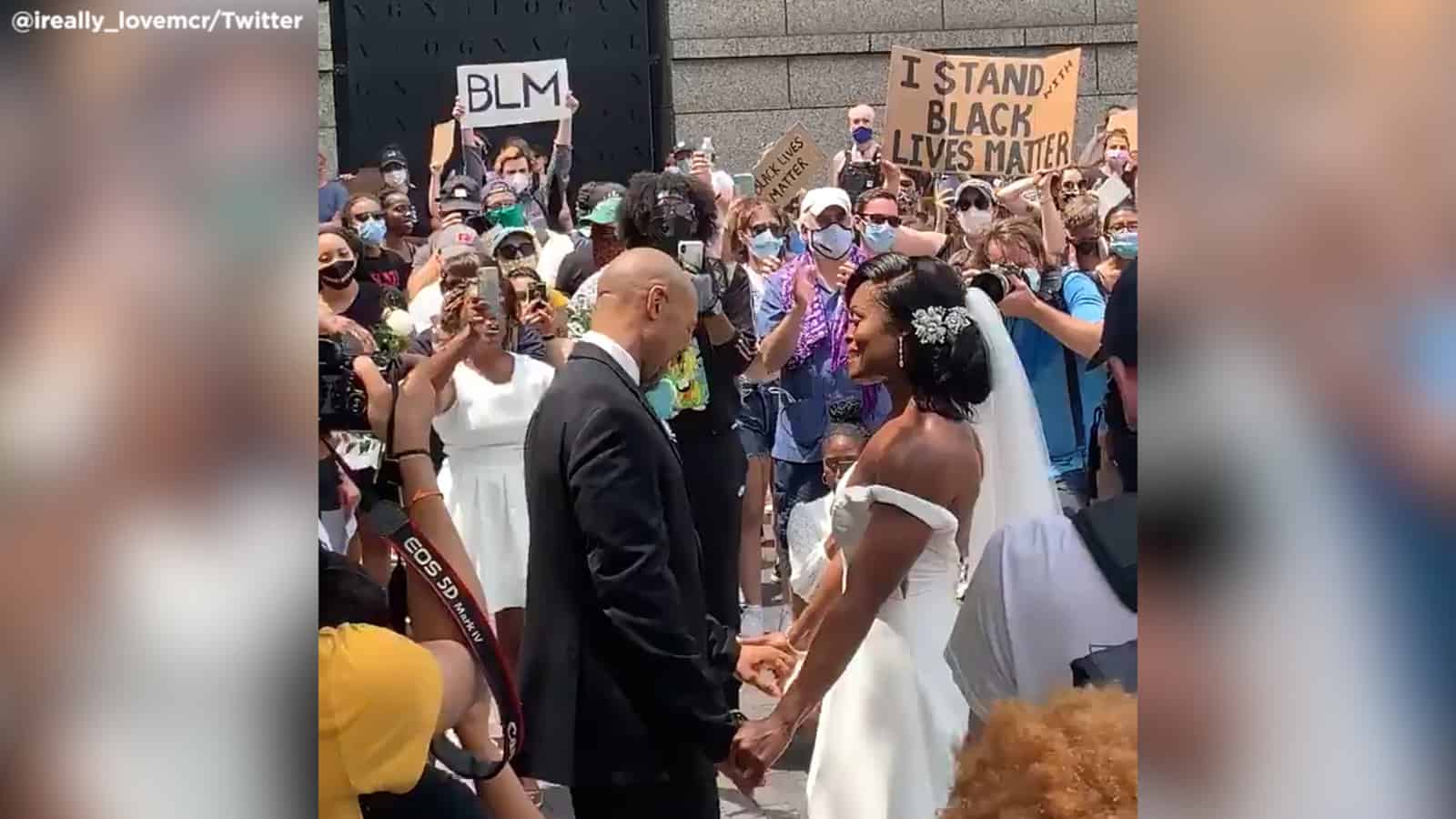Apart from the memorable ‘I Do’s,’ a wedding carries various traditions that have their roots in ancient civilizations that make weddings fun and enjoyable in modern times. While marriage customs and traditions vary across the globe, here are some of the top wedding traditions that have become wedding staples over time:
The Veiled Bride Dressed in White
In ancient Rome, the veil provides to disguise the bride and keep her away from bad spirits. It’s also a custom followed in arranged marriages where the bride’s face remains covered until after the ceremony. This way, the husband wouldn’t back out in case he does not like what his wife looked like.
Furthermore, wearing a white wedding dress was introduced by Queen Victoria in 1840 and became a standard ever since. Thought to symbolize purity, white dresses have become a trend. However, brides nowadays are starting to explore more colorful options.
Toss and Toast
Garlic, aromatic herbs, and grains were once used as bridal bouquets in the belief that they ward off evil spirits. In time, the herbal bunch was replaced by flowers ornately arranged featuring the bride’s favorite bloom.
Associated with the bouquet is the bouquet toss. Back then, in England, the bride was believed to be extra lucky that women ripped pieces of her dress to obtain her luck. As an alternative, a bride would toss the bouquet with the belief that whoever catches it will soon walk the aisle.
The garter in the Dark Ages served as proof that the wedding has been consummated and is believed to bring good luck to anyone who strips it off the bride. However, this led to rowdy crowds that compelled the groom to toss it to bachelors instead. Whoever gets the garter is said to follow in the newlyweds’ footsteps.
Aside from the bouquet and garter, rice is also showered on the couple for good luck and fertility. Modern-day counterparts now come in the form of confetti, bubbles, and fireworks.
The wedding toast came from the Greek and Roman practice of raising cups to offer drinks to the gods and as part of a wedding ceremony that signified an alliance between warring groups. The actual term ‘toast’ also came from the Roman practice of dropping a piece of burnt bread into the wine to dampen its bitter taste. In modern times, toasts were made by family and friends as they pronounced well wishes on the couple.
With This Ring…
Wedding rings were once made out of papyrus and worn on the wrists and ankles. Back then, Romans used iron and then eventually were made with gold. Initially, these tokens meant ownership. Now, wedding rings symbolize union and fidelity in marriage.
Something ‘S’ for good luck
The old English rhyme, “Something old, something new, something blue and a sixpence in your shoe” necessitates that a bride has all five to have a blissful marriage. These charms were meant to protect not only the newlyweds but their future children (“something old”) from the Evil Eye, while being optimistic (“something new”) and having love, purity, and fidelity (“something blue”) ensured a solid marriage.
The sixpence also symbolized prosperity. Instead of putting it in the shoe, the bride’s father gives it before she walks down the aisle.
The Wedding Entourage
Bridesmaids in ancient Rome acted as the bride’s decoys and wore the same outfit to prevent evil spirits from finding the bride and bringing her ill on her wedding day. Today, bridesmaids are handpicked by the bride as the closest few to stand by her during her special day.
Groomsmen were originally the groom’s warrior friends who assisted him in kidnapping his bride before they were married. They were also his allies in fighting off other suitors and the one who emerged the strongest is considered as the ‘best man.’ Groomsmen are the male counterparts of bridesmaids and serve to balance the wedding entourage.
Ancient Roman weddings began with young virgins carrying wheat to bring good health to the couple, which then evolved to having flower girls carry tiny baskets and shower the aisle with petals in preparation for the bride’s wedding march.
During the Victorian era, a pageboy carried wedding rings placed on pillows, which eventually became the ring bearer’s responsibility.
Piece of Cake
Wedding cakes date back as early as Roman times when a groom would break bread over the bride’s head for good luck. It later evolved into a fruitcake with white icing that symbolized purity and wealth.
Cakes also came in three tiers. Traditionally, to guarantee prosperity, the bride and the groom would kiss over it without toppling the cake. The cutting ceremony was symbolic of the bride losing her virginity while eating a piece of the wedding cake served as the couple’s first taste of married life.
Wedding traditions have interesting beginnings, though some have evolved over time, the intention of having a fruitful and prosperous married life remains as the arching theme for all of these.
This content was originally published here.

